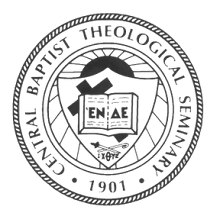Recently a person who is a regular reader of this blog asked me why I name it “Trinitarian Soundings” and why I use the Rublev icon alongside it. I will attempt to answer those questions without making this a full-blown theology lecture! (If you read it all, you can apply for credit at Central).
In this past decade, I have become persuaded that the doctrine of the Trinity really is the glue for our faith and practice as Christians. Rather than being an esoteric doctrine that that only specialists can understand, I believe it is the most central doctrine for understanding our identity as persons formed in the image of God, created for relationship with God and with one another. The doctrine tells us that God refuses to be unrelated to creation, especially those creatures who are “living icons” of the divine likeness.
In recent years, an icon of the Holy Trinity “written” by the fifteen century Russian artist Andrei Rublev has been gaining exposure in the West. Inspired by the story in Genesis 18 that recounts the visit of three “angels” to the home of Abraham and Sarah, the icon depicts the three heavenly messengers seated around a table on which there is a Eucharistic cup. At first the icon was entitled “The Hospitality of Abraham”—which ignored the reality that Sarah did all the work preparing food for the guests! Only later did it come to be known as the Trinity of the Old Testament. In her fine work, Trinity: To Let the Symbol Sing Again, Elizabeth A. Johnson writes:
In the Rublev icon, Abraham and Sarah’s home is depicted as a temple, the dwelling place of God; the oak tree in their yard becomes the tree of life; in the center, the three figures sit around a table on which there is a Eucharistic cup. The mediating eye is drawn toward these three figures who are gathered inclining toward one another in a circle that is not closed. Since these figures are an icon of the Trinity, the image suggests that the mystery of the triune God is not a closed society but a communion in relationship.
A key feature of the icon is that there is space in the foreground for one to pull up a chair and join in the conversation, to enter the divine perichoresis of self-giving hospitality. God invites our friendship through Jesus, and in the power of the Spirit, we participate in the intimate relationship that the Trinity has enjoyed through all eternity.
Molly T. Marshall
For more information about Central, our faculty, students, and community life, please visit www.cbts.edu

I have looked at this picture often but had not thought about scooting up a chair and joining. I always thought about looking in on the three. I like the perspective of joining in. Elaine
ReplyDelete